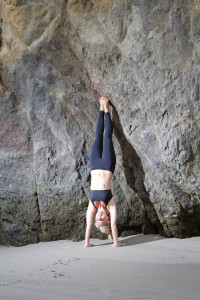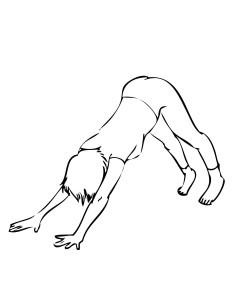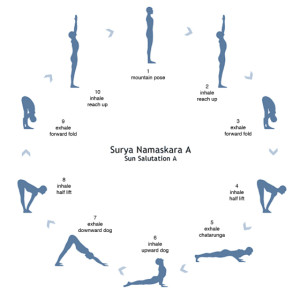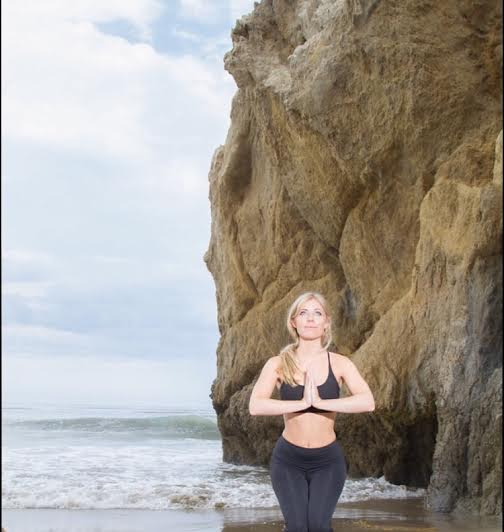When I first began yoga, for many years (yes years) I had no idea there was a rhyme or reason to the practice. It was because I was totally out of my depth and element. The teachers would say things in sanskrit, I was battling a mindful of distracting thoughts and at some point I usually just prayed we would get to the “laying down” part at the end ( I LOVE that part, perhaps more
would say things in sanskrit, I was battling a mindful of distracting thoughts and at some point I usually just prayed we would get to the “laying down” part at the end ( I LOVE that part, perhaps more than most).
than most).
However, there was one thing I did extraordinarily right. There was one thing I achieved in yoga that most people never have or will. And that was my attitude. I have the best attitude when it comes to yoga. My attitude was, and always will be, zero expectations. I do not wander into yoga demanding anything from it that day. I don’t care about seeing results, I don’t over analyze what I can and cannot do. I do not hold any hope or expectations for my teachers
thing I did extraordinarily right. There was one thing I achieved in yoga that most people never have or will. And that was my attitude. I have the best attitude when it comes to yoga. My attitude was, and always will be, zero expectations. I do not wander into yoga demanding anything from it that day. I don’t care about seeing results, I don’t over analyze what I can and cannot do. I do not hold any hope or expectations for my teachers . Just carry simple gratitude that they are there to maybe show me just one thing I didn’t know about myself or about yoga before that day. This humility provided me a limilitess enjoyment and engagement with the experience and still provides me the same wonder and awe today.
. Just carry simple gratitude that they are there to maybe show me just one thing I didn’t know about myself or about yoga before that day. This humility provided me a limilitess enjoyment and engagement with the experience and still provides me the same wonder and awe today.
So as I ventured on to my mat, in this realm of an unknown experience I tried to make sense of it all. As I got into my certification and training I realized that practice wasn’t just some random poses strung together said by a teacher in half english. There actually was a course
and training I realized that practice wasn’t just some random poses strung together said by a teacher in half english. There actually was a course to navigate and a linear path. Each pose helps lead to the next
to navigate and a linear path. Each pose helps lead to the next .
.
In my previous blog I broke down the warm up. Here I will explain what happens after you’ve dropped in and begin
I will explain what happens after you’ve dropped in and begin to flow.
to flow.
Sequencing in yoga is a strategy that is implemented to help take all the component parts offered in warm up, to guide you consciously and subconcsioculy towards a peak position
in warm up, to guide you consciously and subconcsioculy towards a peak position . So basically 1/3 of the way through you’ve already built this pose bit by bit and towards the apex you put it all together. So it’s not just chaos! It’s a systemic approach.
. So basically 1/3 of the way through you’ve already built this pose bit by bit and towards the apex you put it all together. So it’s not just chaos! It’s a systemic approach.
Hence why there should be zero expectations at the beginning
beginning of your
of your journey. Do the work
journey. Do the work and all will come together. No matter the time. So an example of a peak position
and all will come together. No matter the time. So an example of a peak position (which could be anything, which is why the practice is so limitless and exciting) let’s choose Handstand. A good way to sequence a practice around handstand is to break down what exactly is required for this pose.
(which could be anything, which is why the practice is so limitless and exciting) let’s choose Handstand. A good way to sequence a practice around handstand is to break down what exactly is required for this pose.

Fearlessness to go upside down
upside down
Balance
Flexibility
With these component elements in place, there are tangible parts of your warm up which have already
warm up which have already started
started incorporating these parts. For example during warming up, downward dog is a wonderful way to build shoulder strength. In addition you are already going
incorporating these parts. For example during warming up, downward dog is a wonderful way to build shoulder strength. In addition you are already going halfway upside down (since you are raising your
halfway upside down (since you are raising your hips above your
hips above your head). The mind is already experiencing in a very safe way, life upside down.
head). The mind is already experiencing in a very safe way, life upside down.

The Surya A’s and B’s (as mentioned in my warm up blog) are also wonderful series that work nearly every muscle group as well
nearly every muscle group as well as start
as start incorporating balancing and flexibility.
incorporating balancing and flexibility.

So even if you don’t put it all together for the peak pose, eventually after repetition and practice, you will have already done everything it takes to take it a step further and begin
further and begin raising your
raising your legs up over your
legs up over your head for handstand. I’ve noticed in practice that eventually poses reveal themselves to you, through proper breathing, practice and instruction from the teacher
head for handstand. I’ve noticed in practice that eventually poses reveal themselves to you, through proper breathing, practice and instruction from the teacher . Which is why having no expectation is the best way to approach yoga.
. Which is why having no expectation is the best way to approach yoga.
After one has achieved the peak
has achieved the peak position
position , the practice then typically shifts towards cooling down. We cultivate a lot of heat and energy working towards this goal. In my next
, the practice then typically shifts towards cooling down. We cultivate a lot of heat and energy working towards this goal. In my next blog I’ll go
blog I’ll go through the details
through the details of the cool down.
of the cool down.
This is a typical break down for a beginner and intermediate yoga class .
.
Let your work
work be the expression of your
be the expression of your commitment and all will come. Or as I like to say “Do the work
commitment and all will come. Or as I like to say “Do the work and all will calm.”
and all will calm.”
